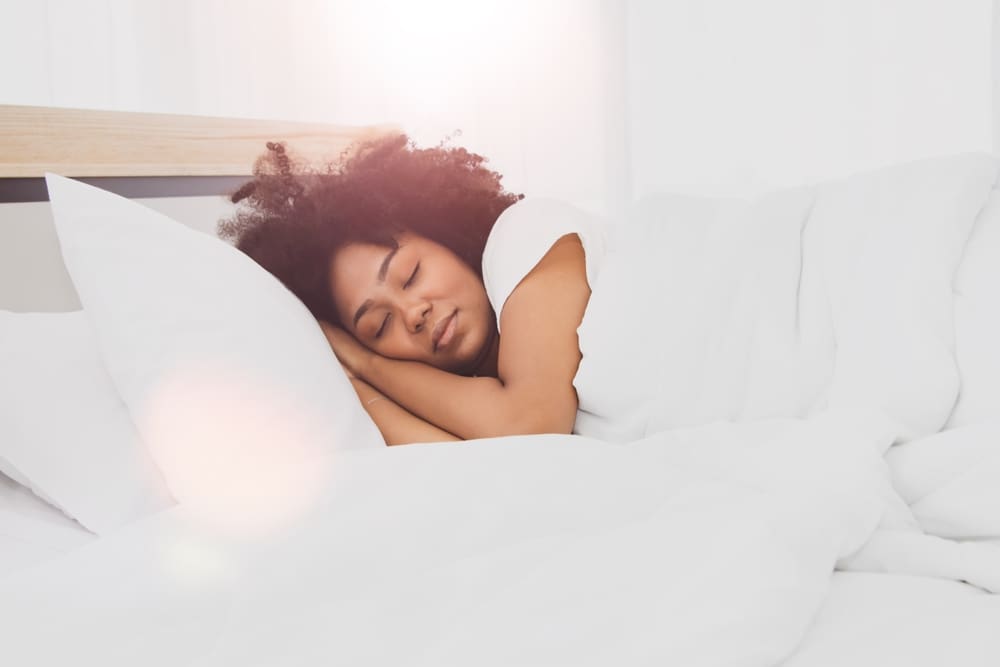We’ve all been there — dragging ourselves out of bed feeling like we’ve been hit by a truck despite getting a full night’s sleep. The alarm blares, and you wonder how eight hours of rest could possibly leave you feeling worse than if you’d pulled an all-nighter. What if the problem isn’t how long you’re sleeping, but when you’re waking up?
The cycle secret
Your sleep isn’t one long, continuous state. Instead, your brain cycles through distinct stages throughout the night, each serving different restorative functions. These cycles average about 90 minutes from start to finish — a predictable rhythm that your body maintains with remarkable consistency.
This 90-minute pattern isn’t just some random quirk of human biology. It’s your brain’s way of organizing an incredibly complex restoration process. Each complete cycle takes you through light sleep, deep sleep, and finally REM (rapid eye movement) sleep, where most dreaming occurs. Together, these stages form what sleep scientists call a complete sleep cycle.
The magic happens when you align your wake-up time with the natural completion of one of these cycles. Wake up at the end of a cycle, and you’ll feel refreshed and alert. Get jolted awake in the middle of a cycle, particularly during deep sleep, and you’ll experience that dreaded “sleep inertia” — that groggy, disoriented state that even multiple cups of coffee struggle to fix.
The math that matters
The practical application of this cycle knowledge is surprisingly simple. Instead of focusing on getting a specific number of hours, think in terms of complete 90-minute cycles. For most adults, this means aiming for either 7.5 hours (five complete cycles) or 9 hours (six complete cycles) of sleep.
The calculation works like this: Figure out when you need to wake up, then count backward in 90-minute increments to find your ideal bedtime. For example, if you need to be up at 6:30 a.m., you should aim to fall asleep at either 11 p.m. (for 7.5 hours) or 9:30 p.m. (for 9 hours).
Notice something important here — the popular recommendation of eight hours actually sets many people up for failure. Eight hours means you’ll likely wake up in the middle of a cycle, potentially triggering that groggy, disoriented state that makes mornings miserable.
The wake-up window
The transition between sleep cycles offers a brief window where waking feels natural rather than jarring. During these transitions, your brain briefly surfaces toward wakefulness before diving into the next cycle, making it the optimal moment for your alarm to go off.
This transition window explains why sometimes you wake up naturally just minutes before your alarm. Your brain has completed a cycle and is hovering in that lighter state of sleep where consciousness gently returns. This natural awakening feels dramatically different from being yanked from deep sleep by an alarm.
Interestingly, your brain actually prepares for your expected wake-up time. If you maintain a consistent sleep schedule, your brain will begin lightening your sleep as your regular wake time approaches. This internal preparation makes the transition to wakefulness smoother — another reason consistency matters so much for sleep quality.
The individual adjustment
While 90 minutes represents the average cycle length, your personal rhythm might vary slightly. Some people naturally run on 85-minute cycles, while others might stretch to 100 minutes or more. Tracking your sleep for a few weeks can help you dial in your personal cycle length.
Pay attention to nights when you wake up feeling particularly refreshed. Count the hours you slept and divide by what you think might be the number of cycles completed. This gives you an estimate of your personal cycle length. Once you know this number, you can fine-tune your bedtime calculations for even better results.
Age also influences cycle timing. Children tend to have shorter cycles, while older adults might experience longer ones. Your personal cycle length might also shift during different life phases, which explains why sleep needs seem to change as we age.
The consistency component
For the 90-minute rule to work its magic, consistency becomes your best friend. Going to bed and waking up at the same times — yes, even on weekends — reinforces your body’s natural rhythm and makes cycle timing more predictable.
This consistency helps calibrate your circadian rhythm, the internal clock that regulates everything from hormone production to body temperature. When your circadian rhythm aligns with your sleep cycle timing, you create the perfect conditions for restorative sleep.
The payoff for this consistency goes beyond just feeling better in the morning. Regular sleep timing has been linked to better metabolism, improved immune function, and even enhanced emotional regulation. Your body loves predictability when it comes to sleep.
The nap application
The 90-minute rule isn’t just for nighttime sleep — it transforms daytime napping too. Most people make the mistake of taking short “power naps” that leave them feeling worse because they wake up during deep sleep.
Instead, if you have the time, aim for a complete 90-minute nap. This allows you to cycle through all sleep stages and wake up naturally at the end of a cycle. You’ll feel genuinely refreshed rather than disoriented and groggy.
If a full 90-minute nap isn’t practical, your next best option is actually a much shorter nap — about 20-25 minutes. This shorter timing works because it keeps you in lighter sleep stages without dipping into deep sleep, making the transition back to wakefulness much easier.
The technology assist
While the 90-minute rule is simple math, technology can help you implement it more effectively. Sleep-tracking apps and wearable devices monitor your movement and sometimes even heart rate to estimate which sleep stage you’re in, though their accuracy varies.
The most practical technology might be a “smart alarm” that detects when you’re in lighter sleep based on your movement and sounds during a designated window. Rather than jolting you awake at an exact time, these alarms wait for you to naturally approach wakefulness within the timeframe you set.
Even without fancy gadgets, free apps can at least help you calculate optimal bedtimes based on the 90-minute rule and your desired wake-up time. These simple calculators take the guesswork out of finding your ideal sleep schedule.
The preparation protocol
Knowing your optimal bedtime is one thing, but actually falling asleep on schedule requires preparation. Your brain needs clear signals that sleep time is approaching, especially in our screen-saturated world where artificial light confuses our natural rhythms.
Create a 30-minute wind-down routine before your calculated bedtime. This might include dimming lights, putting away screens (whose blue light suppresses melatonin production), gentle stretching, reading something calming, or writing in a journal to offload thoughts that might otherwise keep you awake.
Remember that your calculated bedtime should be when you’re actually falling asleep, not just getting into bed. If you typically spend 20 minutes reading before drifting off, account for that by getting into bed earlier than your target sleep time.
The cycle disruptors
Several factors can throw off your carefully calculated sleep cycles. Alcohol deserves special mention — while it might help you fall asleep initially, it severely disrupts your sleep architecture, often preventing you from reaching proper REM sleep later in the night.
Caffeine, even consumed six hours before bedtime, can delay your sleep onset and reduce sleep quality. This means that afternoon coffee might sabotage your carefully timed bedtime, throwing off your entire cycle calculation.
Stress and anxiety similarly disrupt cycle timing by making it harder to fall asleep and potentially causing middle-of-the-night awakenings. Managing these factors becomes essential for making the 90-minute rule work effectively.
The morning momentum
The 90-minute rule sets you up for success, but what you do immediately after waking also matters for leveraging that perfect timing. Exposure to bright light — ideally natural sunlight — within the first 30-60 minutes of waking helps solidify your circadian rhythm and increases alertness.
Physical movement, even something as simple as stretching or a short walk, accelerates the transition to full wakefulness by increasing blood flow and triggering the release of energizing hormones. This morning movement doesn’t need to be intense — even gentle activity signals to your body that sleep time is definitively over.
Hydration plays a surprisingly important role too. You naturally dehydrate during sleep, and rehydrating helps activate your metabolism and energy production. A full glass of water shortly after waking can significantly enhance the benefits of your perfectly timed wake-up.
The night owl adaptation
The 90-minute rule works regardless of whether you’re naturally a night owl or an early bird. The key is acknowledging your chronotype — your natural tendency toward earlier or later sleep times — and working with it rather than against it.
Night owls can still use the 90-minute calculation, they just need to be realistic about when they’ll actually fall asleep. Forcing yourself into bed at 10 p.m. when your body naturally winds down at midnight simply results in frustrating time spent staring at the ceiling.
Instead, night owls should calculate backward from their required wake time, then determine how many complete cycles they can realistically fit. Sometimes this means accepting slightly fewer cycles during work days and using weekends to catch up with your natural rhythm.
By respecting the architecture of your sleep cycles and timing your wake-ups to align with your body’s natural rhythm, you transform your morning experience from a groggy battle to a refreshed beginning. The 90-minute rule isn’t just about sleeping better — it’s about waking better too.

















